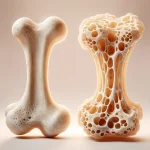The anterior cruciate ligament, or ACL, is an essential ligament in the knee that contributes to joint stabilization. It connects the femur to the tibia and is essential for activities that need abrupt stops, pivots, and directional changes, such as football, basketball, and soccer. ACL injuries rank among the most common knee disorders, affecting thousands of individuals each year.

Symptoms of ACL Injuries
Individuals with ACL injuries typically experience a range of symptoms that can vary in severity. Common symptoms include:
- Popping Sound: Many people report hearing or feeling a pop at the moment of injury.
- Swelling: Rapid swelling usually occurs within hours due to bleeding into the joint.
- Knee Instability: A sensation that the knee may give way or buckle during activity.
- Pain: Attempting to put weight on the afflicted limb might amplify the pain, which can vary from moderate to severe.
These symptoms may present immediately following an injury or may evolve gradually, depending upon its severity.
Causes of ACL Injuries
Specific motions or events that put undue strain on the knee joint are common causes of ACL tears. Common causes include:
- Sudden Direction Changes: Quick pivots or cuts while running or playing sports.
- Direct Impact: Collisions or tackles during contact sports.
- Improper Landing: Landing awkwardly from a jump can strain the ligament.
- Overextension: Hyperextending the knee joint during physical activity.
Studies suggest that female athletes may have an increased risk of ACL injuries owing to anatomical variations and hormonal influences on ligament stability.
Non-Surgical Treatment for ACL Injuries
RICE Protocol
- Rest: Refrain from engaging in any activities that cause pain or discomfort.
- Ice: Apply ice packs to help reduce swelling and alleviate soreness.
- Compression: Use elastic bandages or wraps to help minimize swelling.
- Elevation: Elevate the knee above heart level to help decrease swelling.
Bracing
A knee brace can offer supplementary support and stability during the rehabilitation process.
Medications
Non-steroidal anti-inflammatory drugs (NSAIDs) can help alleviate pain and reduce inflammation.
Non-surgical methods can relieve symptoms but do not restore ligament integrity, which may necessitate surgery for those with significant instability or active lifestyles.
Surgical Treatment for ACL Injuries
ACL Reconstruction is the primary surgical procedure for complete tears involves the replacement of the torn ligament with a graft.
Graft Options:
- Autograft: Tissue taken from the patient’s body (commonly from the patellar tendon or hamstring).
- Allograft: Tissue sourced from a deceased donor.
Surgical Technique
Performed arthroscopically through small incisions, minimizing tissue damage and recovery time.
Graft Fixation
The graft is secured using screws or other fixation devices, allowing it to integrate with the bone over time.
Conclusion
ACL injuries pose considerable risks for sports and physically active adults. Identifying symptoms and comprehending reasons are crucial for effective therapy. Although non-surgical therapies can be advantageous for some people, surgical intervention may be requisite for those aiming to participate in high-demand activities. Timely diagnosis and suitable treatment are essential in reducing long-term problems related to ACL injury. If an ACL injury is suspected, timely consultation with a healthcare expert can result in improved results and a swifter return to exercise.
For enquiries and online appointments, send a message to
www.BangaloreShoulderInstitute.com/contact
For informative videos related to Shoulder problems and their treatment options, Sports Injuries and other orthopedic conditions, visit our YouTube channel Bangalore Shoulder Institute – https://www.youtube.com/@BangaloreShoulderInstitute


